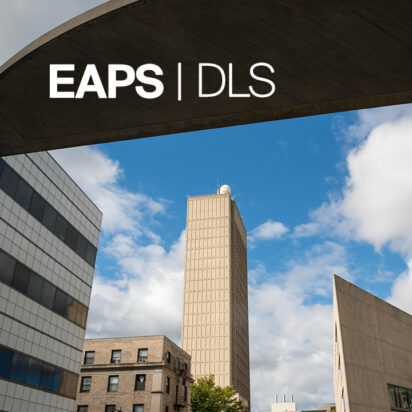
[DLS] Demian Saffer (UT Austin)
Date: Tuesday, February 27, 2024 Time: 12:30 - 1:30pm Location: 54-915 | MIT Campus, Cambridge, MA“Wiring the Subduction Megathrust: Recurring and Triggered Near-Trench Slow Slip Events and their Environment Along the Nankai Subduction Zone”
The offshore reaches of subduction megathrusts fail in a broad spectrum of slip modes, spanning from coseismic slip in great earthquakes, to tsunami earthquakes, to tremor and low frequency earthquakes, to slow slip events (SSEs) and aseismic creep. Understanding the nature of strain accumulation and release in this region is central to assessing hazards associated with shallow earthquake rupture and tsunamigenesis. In this talk I describe a family of recently discovered repeating SSE in the Nankai subduction zone offshore of Honshu Japan, up-dip of rupture zone of great (M8) earthquakes, using formation pore pressure data from instrumented borehole observatories. I then draw on a rapidly advancing body of drilling, laboratory, geophysical, and geodetic data from concerted efforts at several subduction zones over the last two decades, which have enabled an increasingly quantitative understanding of linked fluid- and frictional processes that underpin the spectrum of slip behavior, including: (1) pore pressure and stress states; (2) frictional stability, healing, and their dependence on lithology, stress, and slip velocity; and (3) permanent deformation of the upper plate and its role in the strain budget.
After filtering oceanographic noise using a local hydrostatic reference, the records reveal 13 SSEs in the Nankai Trough study area between 2010-2022. Of these, most arise spontaneously, and occur at ~1 yr intervals with durations of ~7-21 days. The remaining 2 events are larger and immediately follow: (1) the 2011 M9 Tohoku earthquake; and (2) the 2016 M7 Kumamoto earthquake. In some cases, the SSE are accompanied by swarms of low-frequency tremor and low-frequency earthquake activity that appear to migrate trenchward. The data are well fit by slip of ~1-4 cm on a patch at the plate interface that extends 20-40 km in the dip direction. The data are of sufficiently low noise that we are also able to evaluate the time evolution of slip by dividing each SSE into ~2 day sub-events. We develop simple slip models using Greens functions that incorporate the important effects of large gradients in elastic properties in the outer forearc. The results provide constraints on the location and magnitude of slip that best fits the pressure records, including the evolution of slip, its distribution, and its migration.
A key implication is that the SSEs accommodate ~30-50% of plate convergence across the outer ~40 km of the forearc. This coincides with a region of the shallow-most megathrust characterized by: (1) elevated pore fluid pressure; (2) transitional frictional behavior that promotes the nucleation of unstable slip at low sliding velocities – but containing patches that can fail more rapidly and radiate seismic energy; and (3) low total and differential stresses as constrained by analysis of wellbore failures and downhole drilling data. The repeating nature of the events, taken together with apparent triggering by regional earthquakes and the inference of low in situ stress magnitudes, indicates that the outermost reaches of the megathrust are highly sensitive to perturbation and are perched near a state of failure. In total, the data illuminate key controls on the spectrum of slip behavior, and are both mechanically and kinematically consistent with offshore geodetic observations of recurring shallow SSEs, tremor, and microseismicity; SSE slip distribution, slip rates, stress drops; and their correlation with elevated pore fluid pressure.
[DLS] EAPS Department Lecture Series
Weekly talks aimed to bring together the entire EAPS community, given by leading thinkers in the areas of geology, geophysics, geobiology, geochemistry, atmospheric science, oceanography, climatology, and planetary science. Runs concurrently with class 12.S501.
Contact: eapsinfo@mit.edu
